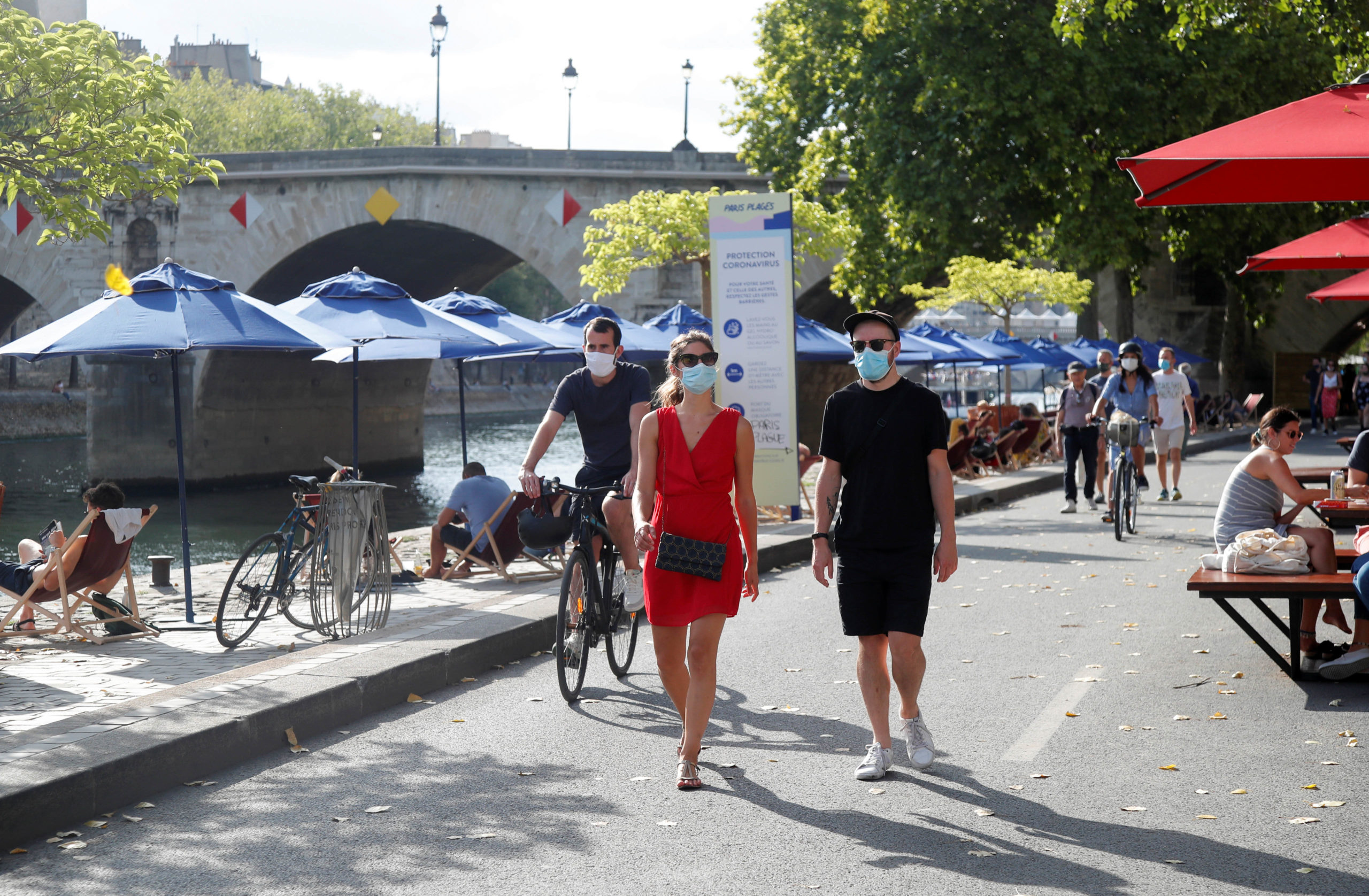
WALK FOR HEALTH People wearing protective masks walk along the banks of the Seine River in Paris as France steps up efforts to curb a resurgence of the coronavirus disease. —REUTERS
BANGKOK—Urban planners and local authorities must improve walkability in cities to tackle poor health and social inequality, researchers said on Thursday, after the coronavirus pandemic highlighted the importance of being able to walk easily and safely.
The cities of Paris, London, Bogota and Hong Kong are among the most walkable in the world, according to a new study of nearly 1,000 cities by New York-based nonprofit Institute for Transportation and Development Policy (ITDP).
Improving walkability is particularly important now, as safety concerns have led to a sharp drop in the use of public transport, posing greater risks for vulnerable residents, said Heather Thompson, chief executive of the ITDP.
Travel inequalities
“COVID-19 has dramatically exposed our inequalities at every level, including options for travel. Those higher on the income scale tend to have access to both walkable neighborhoods and transport, while those who are lower have neither,” she said.
“It is essential to shift the balance of space in our cities away from cars. We have so much to gain—fom cleaner air to better health to stronger local economies and deeper bonds within communities,” Thompson said.
During lockdowns to contain the coronavirus, residents in cities across the world took to walking and exercising on streets that were closed to traffic.
As restrictions eased, however, traffic has increased. More cars on the road worsen air quality, increase toxic emissions and pose greater risks to pedestrians, according to the ITDP.
The institute’s study ranked cities on measures, such as density of urban blocks, residents’ proximity to car-free open spaces, and their access to services, including health care and education.Cities in the United States scored low on walkability, the study showed.
“Walkable cities don’t happen by accident,” D. Taylor Reich, a research associate at ITDP and the report’s lead author, said.
Policymakers’ role
“Policymakers first have to understand the problems that car-oriented planning has caused. Then they can take specific steps: from planning dense, human-scale, mixed-use developments to equipping streets with benches, wide sidewalks and shade.”
A walkable neighborhood is associated with better health for residents and fewer road fatalities. It also boosts local businesses, reduces social inequalities, and increases resilience to climate change impacts and economic shocks, Reich said.
A separate study led by researchers at the University of Warwick showed that a more sustainable economic model could help the world recover financially from the pandemic, while also achieving goals to reduce carbon emissions.
Air quality improvement
During lockdowns, improvements in air quality may have saved more lives, while a reduction in environmental noise and traffic congestion led to an increase in the number of people exercising outside, said the study published this week.
In recent months, several cities have added bicycle lanes, widened pavements and converted parking spaces.
Now, walkability must be at the core of city planning, and making streets car-free is “a quick, cost-effective way” of making cities more walkable, Thompson said.
“In our new normal, our worlds have become much smaller and walking is more essential than ever.”